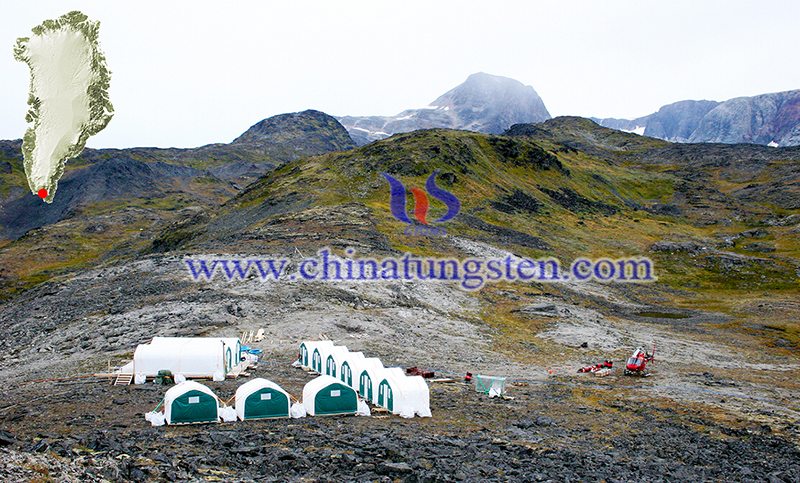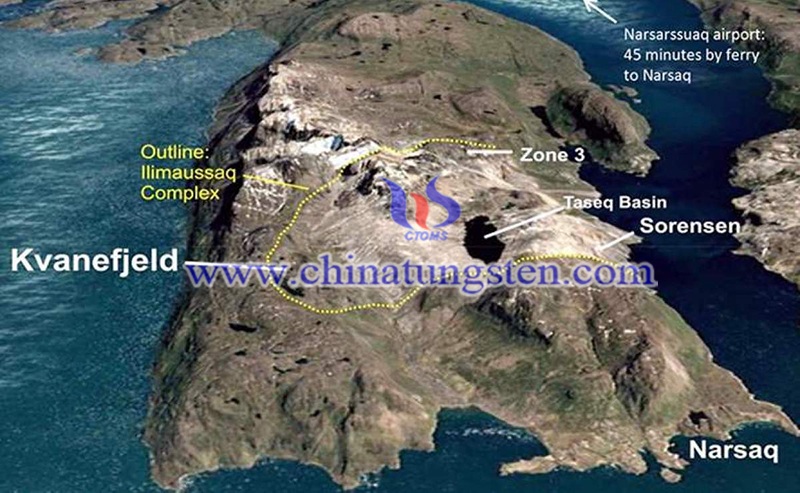Greenland’s Kvanefjeld Rare Earth Project Refinances
- Details
- Category: Tungsten's News
- Published on Tuesday, 08 December 2020 18:48
Over the years, Greenland Minerals Limited' Kvanefjeld multi-element rare earth project attracted investors' interests. Recently, the company is raising another 30 million Australian dollars for the development of the project. The company will issue new shares to undisclosed institutions at 0.24 cents per share and raise an additional 3 million Australian dollars to shareholders.
At a time of consolidation and increased regulation of the rare earth sector in China, Greenland may become an important new source of rare earth elements, particularly the elements critical to the growing magnet sector. Greenland is located in the North Atlantic Ocean between North America and Europe and is the world's largest island, 2.2 million km2, of which approximately 80% is permanently covered with ice.

The Kvanefjeld project, one of the largest rare-earth element deposits in the world, can be found in the south of Greenland near the town of Narsaq. The project comprises three linked deposits. These three deposits contain 1 billion tonnes of mineralized ore. The predominant mineral is steenstrupine, which hosts both rare earths and uranium in significant quantities.
The Kvanefjeld project is owned by Greenland Minerals and Energy (GME) who acquired the project in 2007 and has spent approximately US$60 million developing the project to its current advanced stage. The deposit is the largest and most rigorously defined of the three deposits and as a result, it is this deposit that is the focal point of studies to evaluate the feasibility of mining and processing for the project.
GME has undertaken extensive metallurgical test work on material from the project area, including bench-scale and pilot plant tests, and has developed a flow sheet for economically processing Kvanefjeld ore. The flowsheet, which utilizes well-developed technologies, comprises a beneficiation circuit, an atmospheric leach circuit, and solvent extraction circuit.

A year and a half ago, the company raised nearly A$7 million at a price of 0.12 cents per share, and the stock price has been below this price for most of the past 5-6 years. With the development of renewable energy, electric vehicles, battery energy storage and other emerging industries, as well as strategic minerals and geopolitical competitions, investors' interest in the rare earth uranium project has greatly increased.
In 2019, the results of the feasibility study of the Kvanefjeld rare earth uranium project showed that the project requires an investment of US$509 million and the mine life span is 37 years. The Greenland Minerals Company believes that the project has low investment and low operating costs.
- Rare Earth Manufacturer & Supplier, Chinatungsten Online: www.chinatungsten.com
- Tungsten News & Prices of China Tungsten Industry Association: www.ctia.com.cn
- Molybdenum News & Price: news.molybdenum.com.cn
- Tel.: 86 592 5129696; Fax: 86 592 5129797; Email: sales@chinatungsten.com